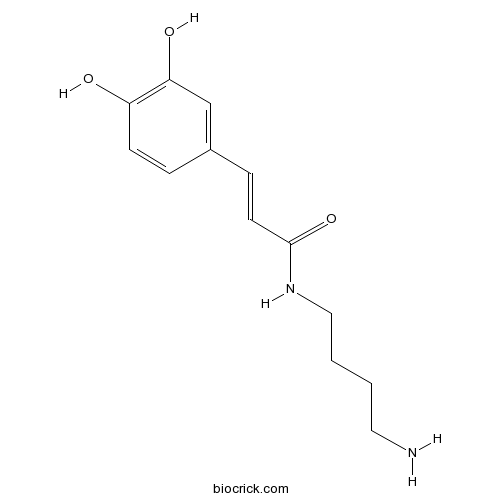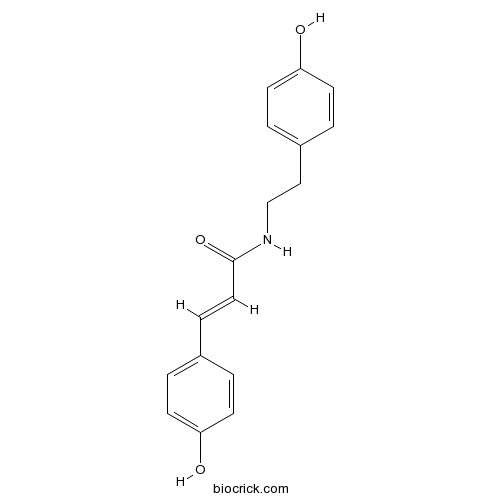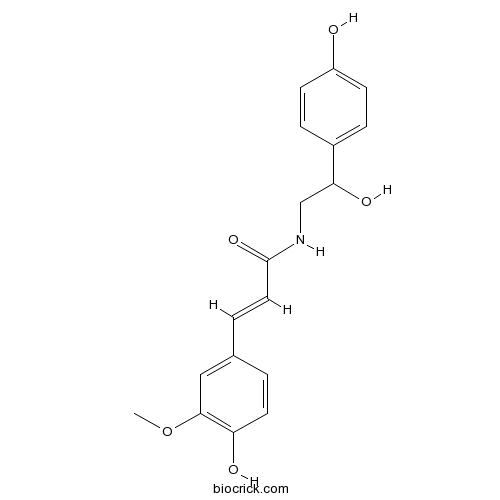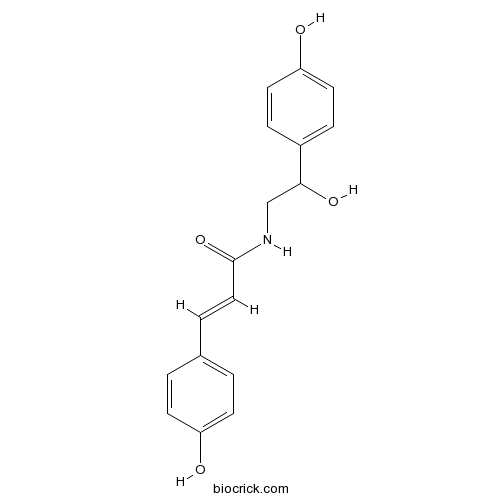Solanum melongena
Solanum melongena
1. The products in our compound library are selected from thousands of unique natural products; 2. It has the characteristics of diverse structure, diverse sources and wide coverage of activities; 3. Provide information on the activity of products from major journals, patents and research reports around the world, providing theoretical direction and research basis for further research and screening; 4. Free combination according to the type, source, target and disease of natural product; 5. The compound powder is placed in a covered tube and then discharged into a 10 x 10 cryostat; 6. Transport in ice pack or dry ice pack. Please store it at -20 °C as soon as possible after receiving the product, and use it as soon as possible after opening.
Natural products/compounds from Solanum melongena
- Cat.No. Product Name CAS Number COA
-
BCC8391
(E)-N-Caffeoylputrescine29554-26-5
Instructions

-
BCN5320
N-p-trans-Coumaroyltyramine36417-86-4
Instructions

-
BCN4604
N-Feruloyloctopamine66648-44-0
Instructions

-
BCN4603
N-p-Coumaroyloctopamine66648-45-1
Instructions

Shedding new light on the origin and spread of the brinjal eggplant (Solanum melongena L.) and its wild relatives.[Pubmed: 30091787]
While brinjal eggplant (Solanum melongena L.) is the second most important solanaceous fruit crop, we lack firm knowledge of its evolutionary relationships. This in turn limits efficient use of crop wild relatives in eggplant improvement. Here, we examine the hypothesis of linear step-wise expansion of the eggplant group from Africa to Asia.
Diallel genetic analysis for multiple traits in eggplant and assessment of genetic distances for predicting hybrids performance.[Pubmed: 29949625]
Evaluation and prediction of the performance of hybrids is important in eggplant (Solanum melongena) breeding. A set of 10 morphologically highly diverse eggplant parents, including nine inbred S. melongena and one weedy S. insanum accessions, were intercrossed according to a half-diallel mating design without reciprocals to obtain 45 hybrids. Parents and hybrids were evaluated for 14 morphological and agronomic conventional descriptors and 14 fruit morphometric traits using Tomato Analyzer. Genetic distances among parents were estimated with 7,335 polymorphic SNP markers. Wide ranges of variation and significant differences were observed in the set of 55 genotypes for all traits, although the hybrids group had significantly higher vigour and yield than parents. General and specific combining abilities (GCA and SCA) were significant for most (GCA) or all (SCA) traits, although a wide variation was obtained for GCA/SCA ratios. Many relevant traits associated to vigour and yield had low GCA/SCA ratios and narrow-sense heritability (h2) values, while the reverse occurred for most fruit shape descriptors. Broad-sense heritability (H2) values were generally high, irrespective of GCA/SCA ratios. Significant correlations were found between traits related to size of leaf, flower and fruit, as well as among many fruit morphometric traits. Genetic distances (GD) among parents were coherent with their phylogenetic relationships, but few significant and generally low correlations were found between GD and hybrid means, heterosis or SCA. The results provide relevant information for developing appropriate strategies for parent selection and hybrid development in eggplant and suggest that GD among parents have limited value to predict hybrid performance in this crop.
Correction to: Transcriptome profiling of genes related to light-induced anthocyanin biosynthesis in eggplant (Solanum melongena L.) before purple color becomes evident.[Pubmed: 29728058]
After publication of the original article [1] it was noted that in Additional file 1: Table S1, and Fig. 1, specific primer sequences were incorrect, and taken from Sme2.5_02154.1_g00001.1 rather than Sme2.5_13923.1_g00001.1.
New steroidal saponins from the roots of Solanum melongena L.[Pubmed: 29715543]
None


